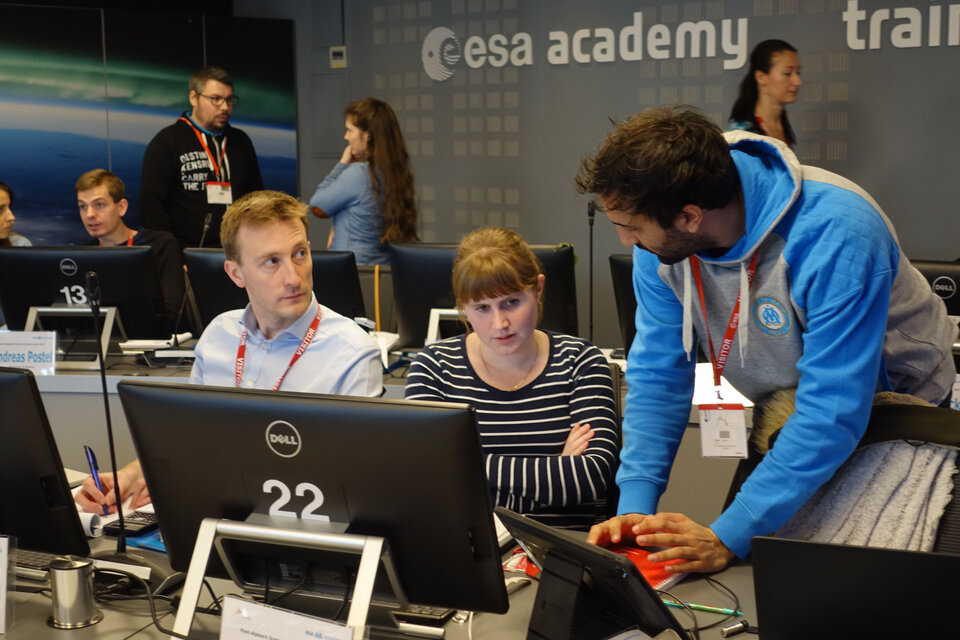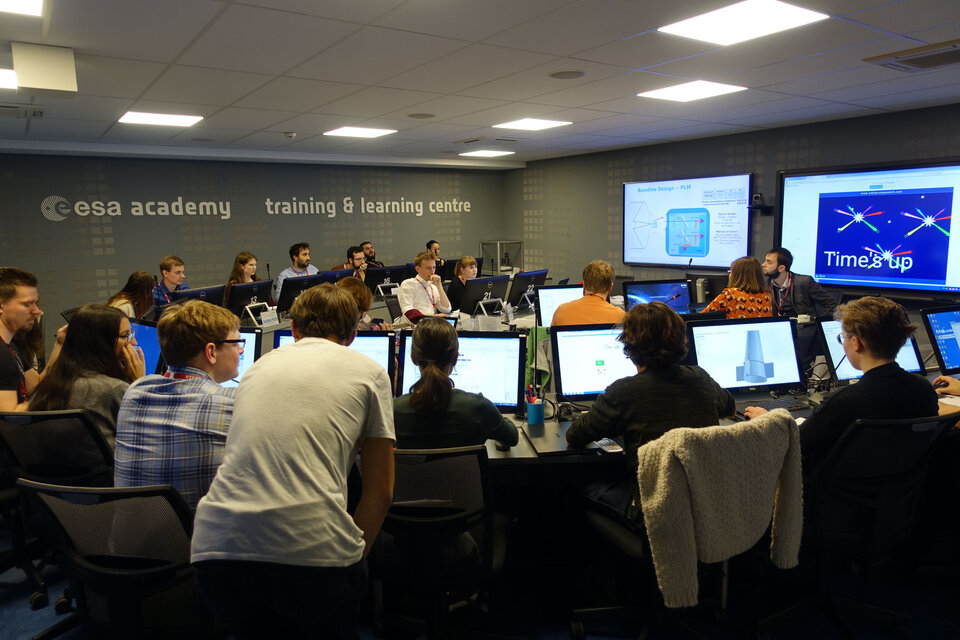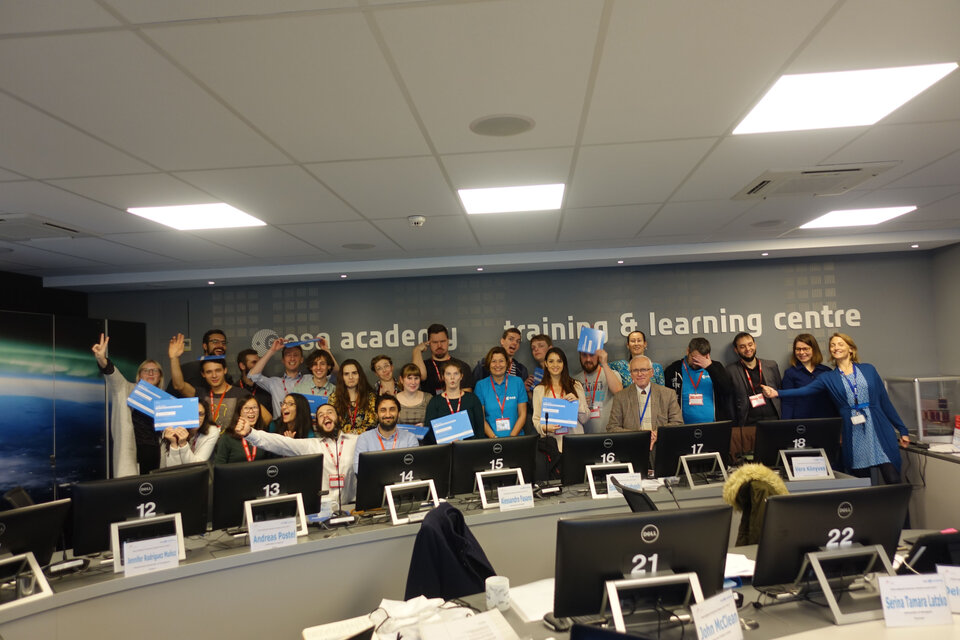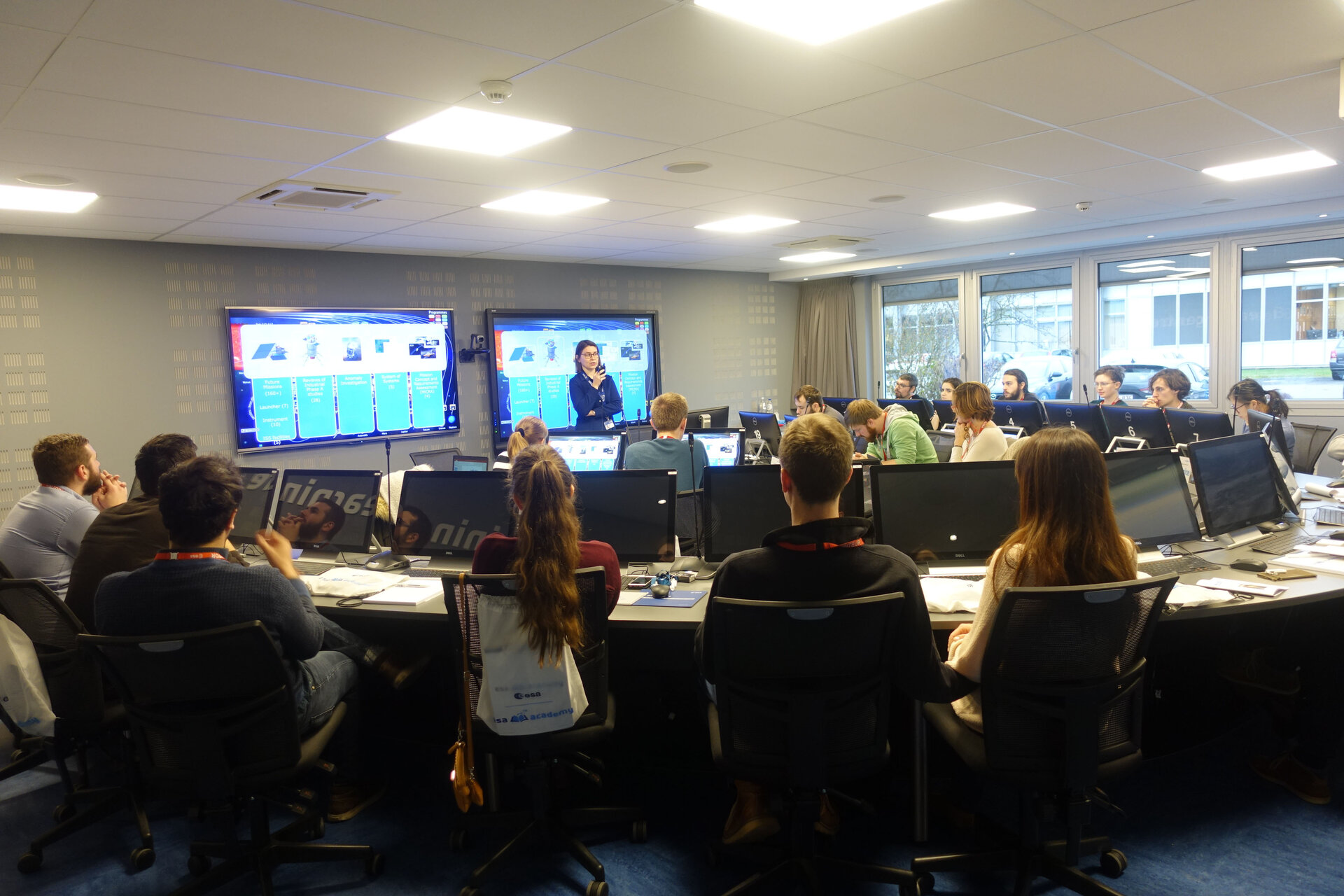Alpbach Summer School students improve design for space mission to investigate our dusty Universe
Earlier this year 60 European university students and young professionals attended the Alpbach Summer School 2017, which is jointly organised by FFG and ESA, on the topic “Dust in the Universe”. It offers them an intensive advanced training and working experience on different topics of space science each year.
Divided in four teams, the participants were set up to define the scientific objectives of a space mission to investigate dust that pervades the Universe and a preliminary end-to-end mission design including the spacecraft, scientific instruments, mission and science operations that had to meet the stated objectives. On the last day of the Summer School, each team presented a short mission study to a panel of experts.
All Summer School participants were then invited by ESA to apply to the Post-Alpbach Summer School Event 2017, an add-on to the Alpbach Summer School, in which the main objective was to improve the original design of the space mission elaborated by the Blue team in Alpbach.

19 university students from 12 different ESA Member States have successfully completed the Post-Alpbach Summer School Event 2017 held at ESA Academy’s Training and Learning Centre, ESEC, Belgium, from 20 to 24 November 2017, where they further elaborated the PAHST (Polycyclic Aromatic Hydrocarbons Space Telescope) mission by the use of the Concurrent Engineering Approach.
The primary goal of the PAHST (Polycyclic Aromatic Hydrocarbons Space Telescope) mission is to obtain a complete view of star formation in the early Universe. This would be achieved by observing light that was originally ultraviolet, but was then absorbed by dust and re-emitted as infrared. As if this weren’t ambitious enough, PAHST even has secondary objectives: to determine the structure of dense filaments in the galactic interstellar medium, and to observe brown dwarf stars and their surrounding dusty rings.

To help develop ideas for the hypothetical mission during this follow-up event, two ESA experts from ESA’s Systems and Concurrent Engineering Section were on-hand to guide the students in the Concurrent Engineering approach. In addition, two scientific tutors from the Alpbach Summer School 2017 supported the students with their science case.
As explains a British student from Imperial College London, “Concurrent Engineering is a unique and enjoyable experience. The best part is seeing the mission coming to life: everyone inputs their design values, and the next thing you know, they appear before your eyes in a CAD model. The ESA experts helped us to optimise the ambitious aims of the Post-Alpbach mission, which proposes the largest and coldest mirror ever to be flown in space, and all of the students continued to develop the great working relationships from our time at the summer school.”
According to the Concurrent Engineering approach, the students were divided into teams of two to cover the different aspects of the space mission, each working on one of the following subsystems:

- Communication and Data Handling
- Instruments and Remote Sensing
- Power
- Attitude and Orbit Control
- Trajectory Analysis
- Propulsion
- Structure and Mechanisms
- Configuration
- Thermal
- System Engineering Assistant
The students were first introduced to the Concurrent Engineering approach, and had time to try the Open Concurrent Design Tool (OCDT). Participants who originally proposed PAHST at the Alpbach Summer School 2017 then presented their designs to the rest of the attendees. Lively discussions about the mission objectives and requirements followed. During the evening, the students reviewed their design based on advice from the experts.
For the rest of the week each team of students iterated on the design of their subsystem in order to improve and to meet the requirements of the others. On Thursday afternoon the group froze their design. The following morning, they presented their final proposal to a panel of experts at ESEC. Many interesting and challenging questions were asked of the students, but they displayed their understanding and new skills admirably. The presentation was a success, and the students accomplished their objectives! Ultimately, they were able to considerably improve the design of their spacecraft by using Concurrent Engineering.
Michaela Gitsch from FFG, the Summer School Director, was present. She said, “I was happy to witness the Post-Alpbach students 2017 enthusiastically working here at ESEC in Redu. I saw them learning and experiencing Concurrent Engineering and optimising an Alpbach space mission. The Post-Alpbach event at the ESA educational facilities is a remarkably good match with the Summer School Alpbach, and is another fruitful close cooperation between ESA and the Austrian Research Promotion Agency, FFG, with a common goal: to support the next generation of space scientists and engineers on their way toward positions in European space industry and science.”
On Thursday night, after a hard working week, the students and experts had a break and visited Bouillon Castle where they were given a torch-light tour by a knight in armour!
The entire experience was summed up by a Danish student from the University of Copenhagen: “Post-Alpbach was an excellent introduction to spacecraft design, with lots of hard work and lots of fun. I wish I could participate every year!”
- For more information about ESA Academy training opportunities, please visit http://www.esa.int/Education/ESA_Academy/Current_opportunities and http://www.esa.int/Education/ESA_Academy/Future_opportunities2
- To contact ESA Academy, please e-mail: esa.academy@esa.int



